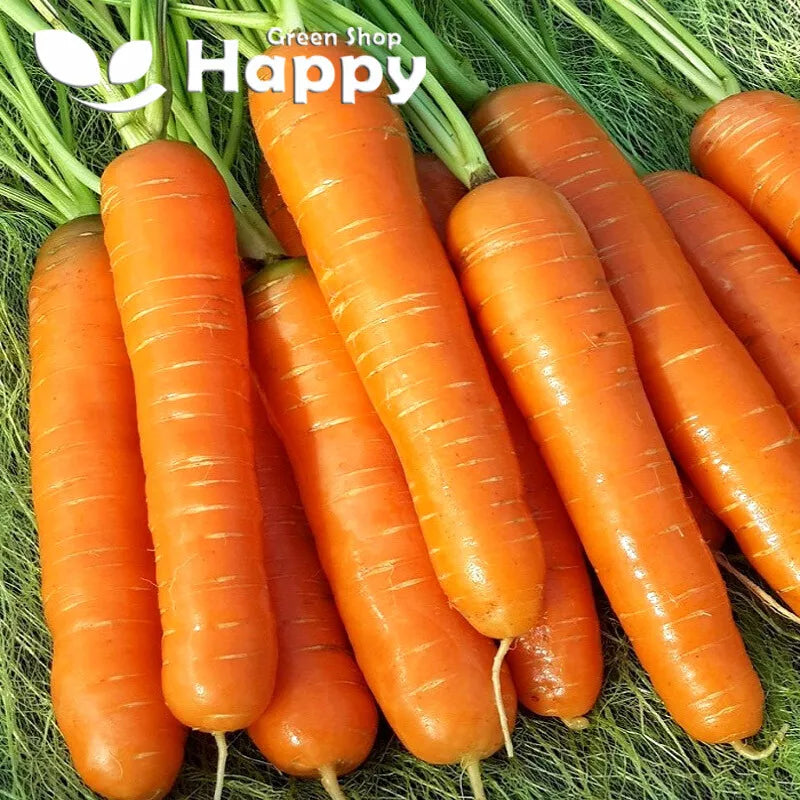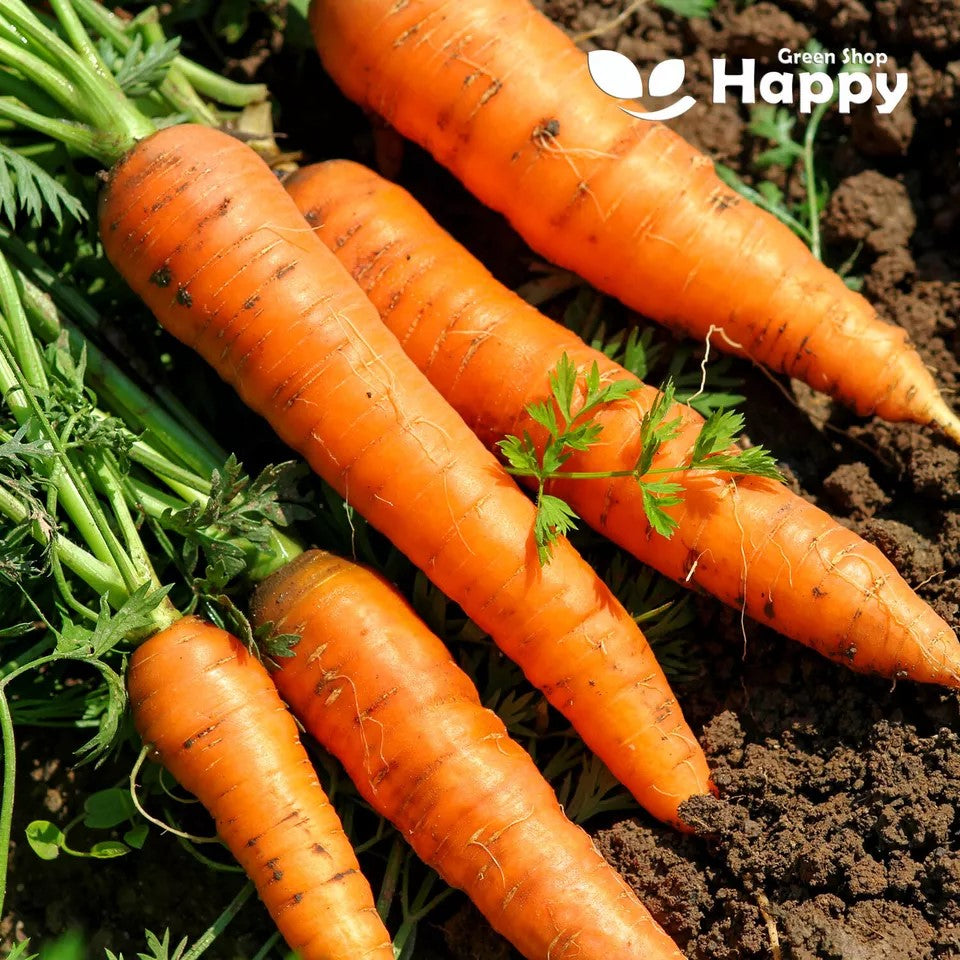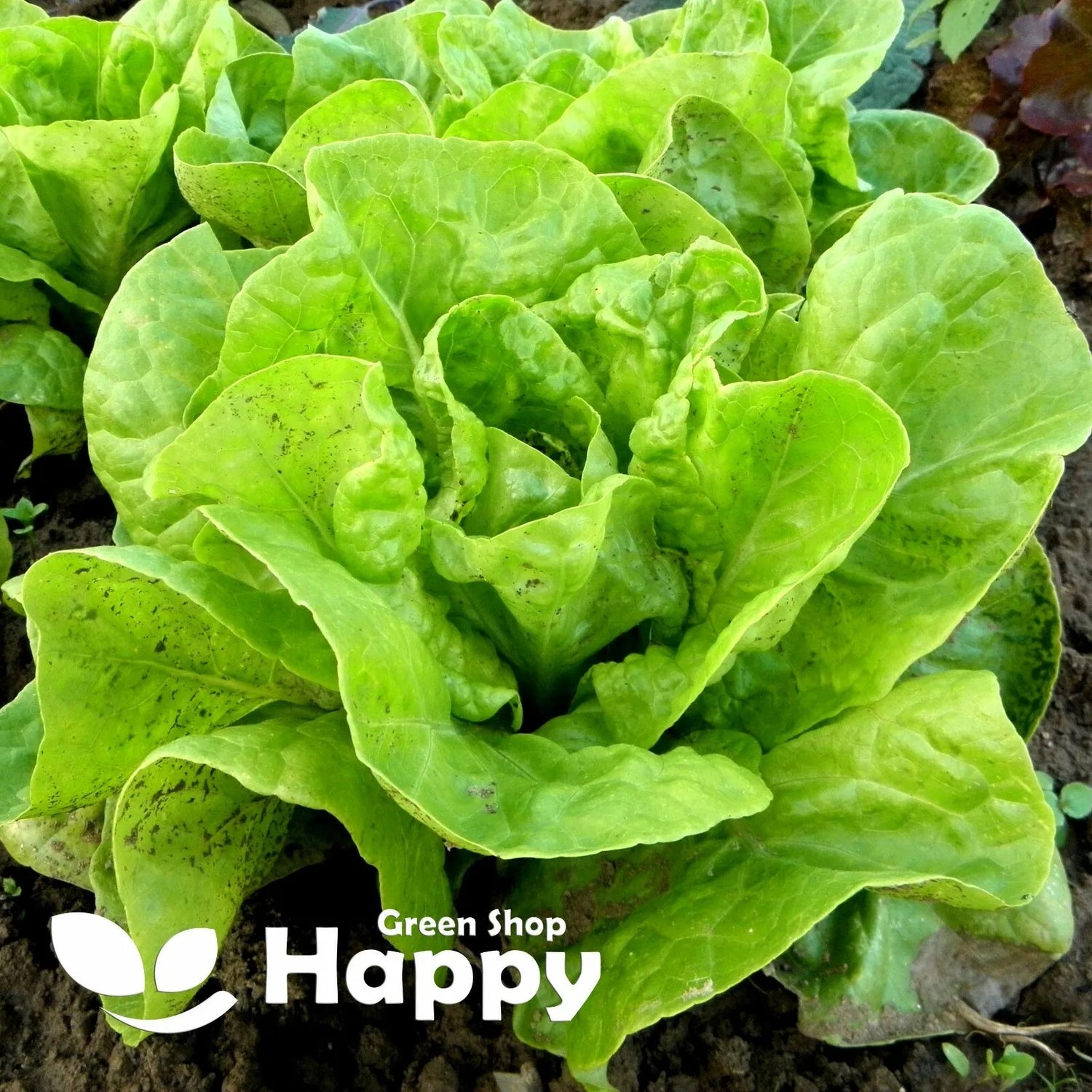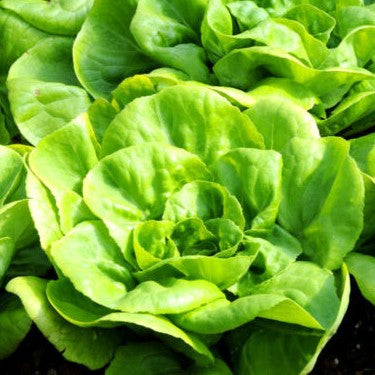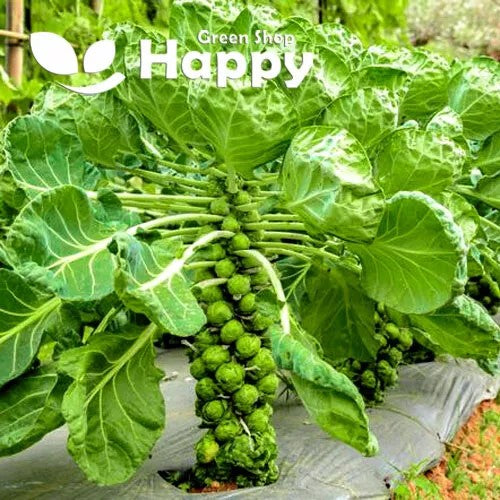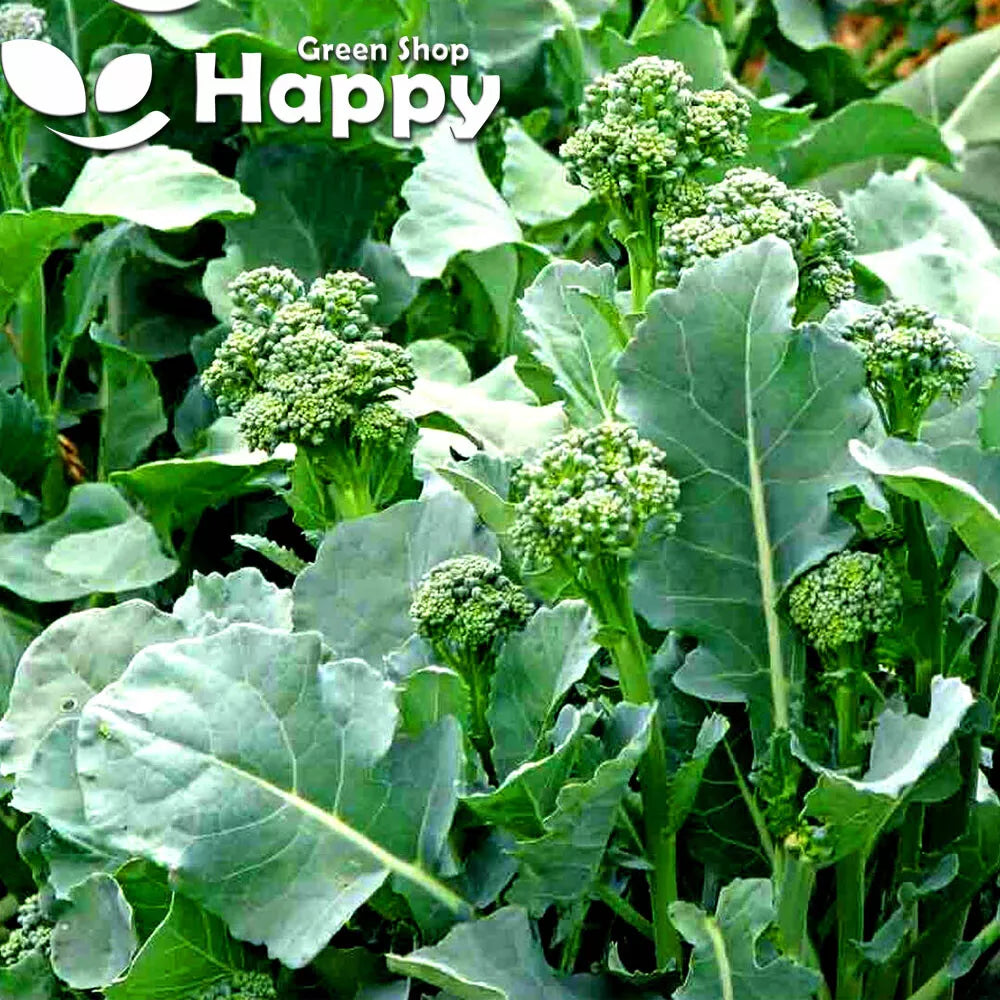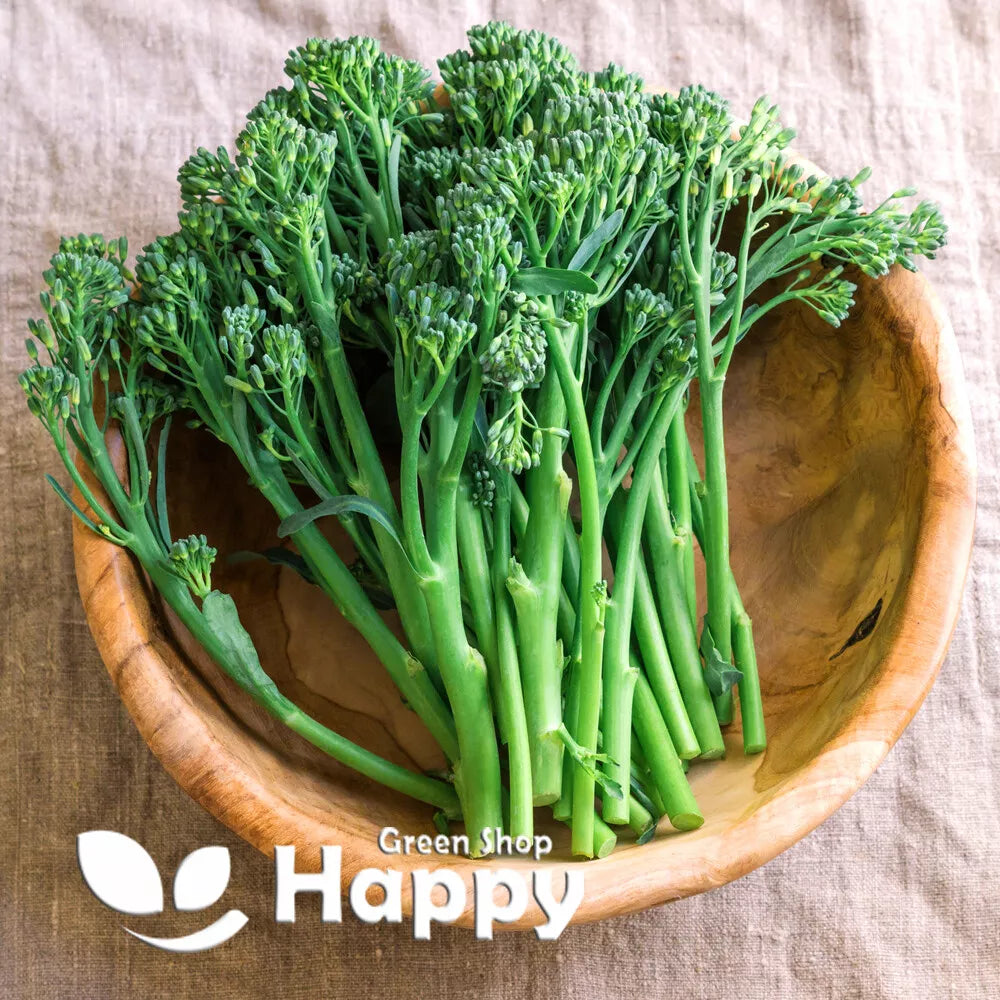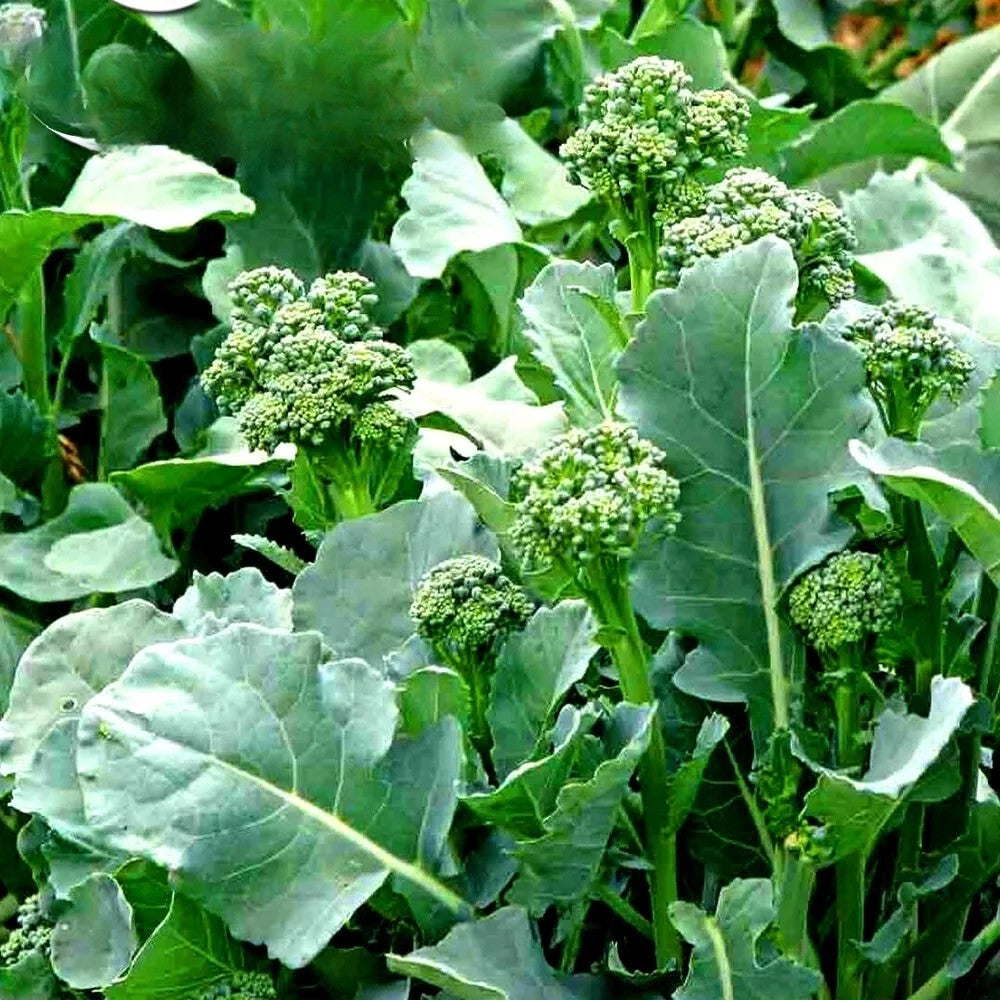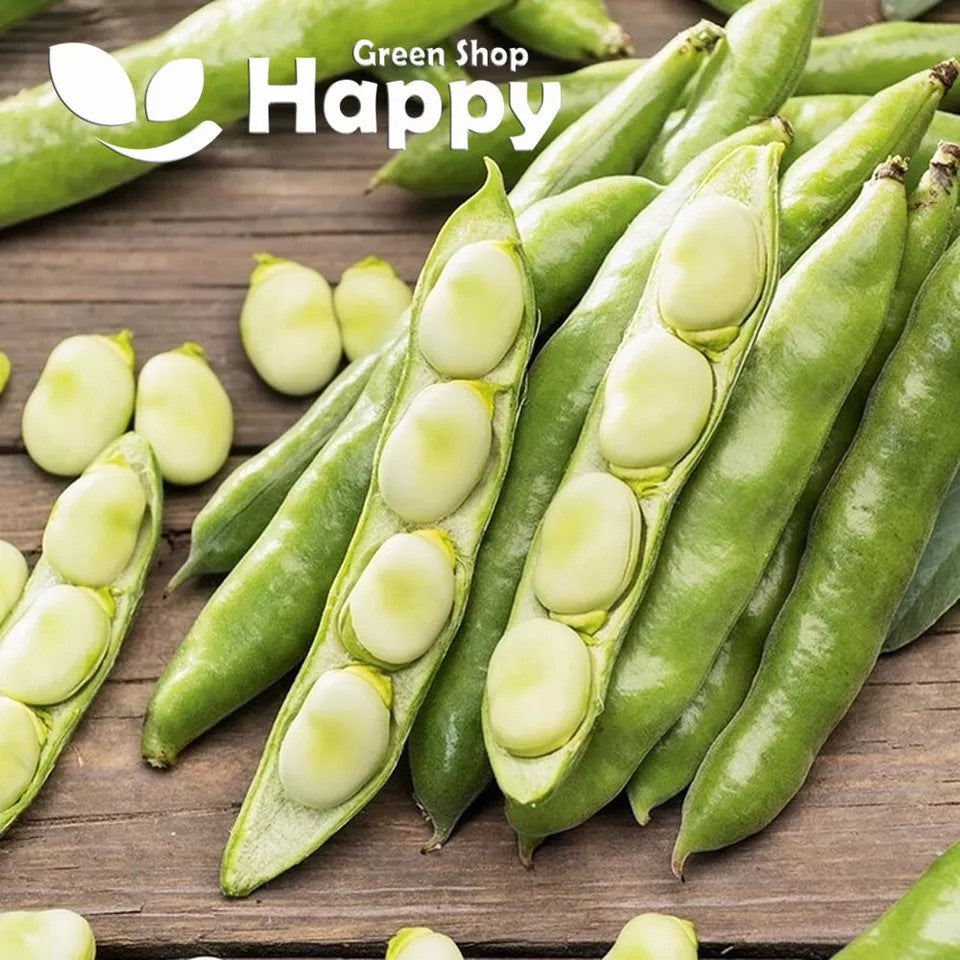Sort by:
190 products
190 products
Carrot ‘Cortina’ F1 Seeds (Daucus carota)
Grow sweet, uniform carrots with Carrot ‘Cortina’ F1 (Daucus carota). This early-maturing hybrid produces smooth, tapered, bright orange roots with excellent flavor, perfect for fresh salads, cooking, and roasting. Hardy and highly productive, it’s ideal for vegetable gardens, raised beds, and succession sowing for a continuous harvest.
How to Grow
-
Sow seeds directly outdoors from early spring to midsummer.
-
Use fertile, well-drained soil in full sun.
-
Sow seeds 1 cm deep and thin seedlings to 5–8 cm apart.
-
Keep soil consistently moist for optimal germination (10–14 days).
-
Harvest roots when fully grown but still tender for best flavor.
Key Features
-
Smooth, tapered, bright orange roots
-
Early-maturing and high-yield F1 hybrid
-
Sweet and flavorful, ideal for salads, cooking, and roasting
-
Reliable and easy to grow
-
Suitable for succession sowing for continuous harvest
Ideal For
-
Vegetable gardens, raised beds, and allotments
-
Fresh salads, cooking, and roasting
-
Succession sowing for steady harvests
-
Homegrown culinary use
Sowing
-
Best time: Early spring to midsummer outdoors
-
Depth: 1 cm
-
Spacing: Thin to 5–8 cm apart
-
Prefers full sun and fertile, well-drained soil
Quick Tip
-
Sow in successive batches every 2–3 weeks for a continuous supply of sweet, tender carrots.
Carrot 'Amsterdam 2' – 1000 Seeds (Daucus carota)
Carrot 'Amsterdam 2' is a very early and reliable variety producing smooth, slender, and sweet roots. With tender flesh and excellent flavor, it is perfect for eating fresh, juicing, or cooking. A quick-growing carrot ideal for successional sowings to enjoy a steady harvest all summer long.
How to Grow
-
Sow outdoors: February – July in well-prepared, finely raked soil.
-
Sow thinly in rows 20–25 cm apart.
-
Thin seedlings to 5 cm spacing for best root size.
-
Prefers full sun and well-drained, sandy soil.
Key Features
-
Early, fast-maturing variety
-
Slender, smooth, and sweet roots
-
Excellent for fresh eating, juicing & cooking
-
Ideal for containers and smaller gardens
-
Suitable for successional sowing
Ideal For
-
Fresh snacking and salads
-
Juices and soups
-
Succession planting for continuous crops
Sowing & Harvest
-
Sow: February – July
-
Harvest: May – September
Quick Tip
Sow small batches every 2–3 weeks to ensure a continuous harvest of tender carrots throughout the season.
Butterhead Lettuce 'May Queen' – Seeds (Lactuca sativa)
Butterhead Lettuce 'May Queen' is a classic, slow-bolting variety producing soft, tender, and buttery green leaves with a mild, sweet flavor. Ideal for salads, sandwiches, and wraps, it forms compact, easy-to-harvest heads and thrives in spring and early summer sowings. Perfect for home gardens, raised beds, and container cultivation.
How to Grow
-
Sow seeds indoors from February to April or directly outdoors from March to June.
-
Sow 0.5–1 cm deep in fertile, well-drained soil.
-
Thin seedlings to 20–25 cm apart to allow head development.
-
Prefers partial shade to full sun and consistent moisture.
-
Harvest outer leaves or whole heads when mature.
Key Features
-
Tender, buttery green leaves
-
Slow-bolting, ideal for spring and early summer
-
Compact, easy-to-harvest heads
-
Mild, sweet flavor suitable for fresh eating
-
Perfect for containers, raised beds, and garden rows
Ideal For
-
Fresh salads, sandwiches, and wraps
-
Home gardens and small spaces
-
Successive sowings for continuous harvest
Sowing & Harvest
-
Sow: February to June
-
Depth: 0.5–1 cm
-
Spacing: 20–25 cm
-
Harvest: April to July
Quick Tip
-
Keep soil evenly moist and shade young seedlings during hot spells to prevent bitterness.
Butterhead Lettuce ‘All Year Round’ Seeds (Lactuca sativa)
Enjoy fresh, tender salad leaves throughout the season with Butterhead Lettuce ‘All Year Round’ (Lactuca sativa). This versatile variety produces soft, buttery-textured leaves with a mild flavor, perfect for salads, sandwiches, and garnishes. Easy to grow and quick to mature, it thrives in both outdoor and greenhouse conditions.
How to Grow
-
Sow seeds directly outdoors from early spring to late summer or indoors for transplanting.
-
Use fertile, well-drained soil in full sun to partial shade.
-
Sow seeds thinly, cover lightly with soil, and keep moist until germination (7–14 days).
-
Thin seedlings to 20–25 cm apart for healthy growth.
-
Harvest outer leaves regularly or cut the whole head when mature.
Key Features
-
Tender, buttery-textured leaves with mild flavor
-
Quick-growing and versatile variety
-
Suitable for outdoor and greenhouse cultivation
-
Ideal for continuous harvest throughout the season
-
Easy to grow and maintain
Ideal For
-
Fresh salads, sandwiches, and garnishes
-
Kitchen gardens and raised beds
-
Continuous harvest in outdoor or protected environments
-
Pollinator-friendly garden spaces
Sowing
-
Best time: Early spring to late summer outdoors or indoors for transplanting
-
Germination: 7–14 days
-
Sow thinly, cover lightly, keep soil moist
-
Prefers full sun to partial shade and fertile, well-drained soil
Quick Tip
-
Sow in successive batches every 2–3 weeks for a continuous supply of tender leaves.
Brussel Sprout 'Casiopea' – Seeds (Brassica oleracea)
The Brussel Sprout 'Casiopea' is a high-yielding variety producing uniform, medium-sized sprouts with firm, dense heads and excellent flavor. Known for its reliable growth and resistance to bolting, it thrives in cooler weather, making it ideal for autumn and winter harvests. Perfect for roasting, steaming, or sautéing, this variety is a favorite for home gardens and allotments.
How to Grow
-
Sow seeds indoors from February to March or directly outdoors from March to April.
-
Plant 1–2 cm deep in trays or modules and transplant when seedlings are strong.
-
Space plants 50–60 cm apart in fertile, well-drained soil with full sun.
-
Support plants if needed, and maintain regular watering.
-
Harvest sprouts from the base upwards as they mature.
Key Features
-
High-yielding, uniform sprouts
-
Firm, dense heads with excellent flavor
-
Resistant to bolting and suited for cooler weather
-
Ideal for autumn and winter harvests
-
Versatile for roasting, steaming, and sautéing
Ideal For
-
Autumn and winter vegetable gardens
-
Roasting, steaming, or sautéing
-
Home gardeners seeking reliable, flavorful sprouts
Sowing & Harvest
-
Sow: February to April
-
Spacing: 50–60 cm between plants
-
Harvest: September to December
Quick Tip
-
For sweeter sprouts, leave them on the plant until after a light frost—it enhances flavor and texture.
Broccoletto 'Centoventino' – Seeds (Brassica rapa)
Broccoletto 'Centoventino' is a traditional Italian sprouting broccoli variety, producing tender, thin stalks with small, flavorful florets and abundant leafy greens. Known for its quick growth and delicate, slightly sweet taste, it is ideal for sautéing, steaming, and stir-fries. A versatile, cool-season crop, perfect for home gardens and allotments.
How to Grow
-
Sow seeds indoors from February to April or directly outdoors from March to May.
-
Sow 1–2 cm deep in fertile, well-drained soil.
-
Thin seedlings to 25–30 cm apart for optimal growth.
-
Prefers full sun and regular watering.
-
Harvest young shoots and florets continuously for best flavor.
Key Features
-
Traditional Italian sprouting broccoli
-
Tender stalks with small, flavorful florets
-
Slightly sweet, delicate flavor
-
Fast-growing and productive
-
Ideal for sautéing, steaming, and stir-fries
Ideal For
-
Home gardens and allotments
-
Fresh cooking, steaming, and sautéing
-
Cool-season planting and continuous harvest
Sowing & Harvest
-
Sow: February to May
-
Depth: 1–2 cm
-
Spacing: 25–30 cm
-
Harvest: May to October
Quick Tip
-
Harvest young shoots regularly to encourage new growth and maintain tender texture.
Broccoletto 'Quarantino' – Seeds
(Brassica rapa) – Traditional Italian Spring Green
Broccoletto 'Quarantino' is a classic Italian leafy vegetable, prized for its tender, flavorful shoots and leaves. Belonging to the Brassica rapa family, this variety is fast-growing and ready to harvest in just 40 days – hence the name Quarantino (“forty days”). It is widely used in traditional Italian cuisine, either lightly steamed, sautéed with olive oil and garlic, or added to soups and pasta dishes.
Key Features
-
Type: Hardy leafy green (annual/biannual)
-
Growth: Vigorous, compact, fast-maturing (around 40 days)
-
Flavor: Tender, slightly peppery and nutty taste
-
Harvest: Young leaves and shoots for continuous picking
-
Use: Italian cuisine, stir-fries, soups, pasta, and side dishes
Ideal For
-
Traditional Italian cooking
-
Cut-and-come-again harvests
-
Quick, reliable leafy green supply
-
Kitchen gardens and allotments
Sowing & Growing
-
Sow outdoors: March–September, in rows or broadcast.
-
Spacing: 20–30 cm between plants.
-
Soil: Fertile, well-drained soil enriched with compost.
-
Sunlight: Full sun to partial shade.
-
Harvest: From 40 days after sowing, cut young shoots regularly to encourage new growth.
Care Tips
-
Keep soil moist for tender leaves.
-
Harvest frequently to prolong production.
-
Best enjoyed fresh – tender shoots have peak flavor.
Broad Bean ‘Windsor’ Seeds (Vicia faba)
Grow hearty, nutritious beans with Broad Bean ‘Windsor’ (Vicia faba). This classic variety produces large, flavorful beans ideal for fresh eating, cooking, or freezing. Hardy and easy to grow, it thrives in temperate climates and enriches the soil with nitrogen, making it perfect for vegetable gardens and crop rotation.
How to Grow
-
Sow seeds directly outdoors from early spring to late spring.
-
Use well-drained, fertile soil in full sun to partial shade.
-
Plant seeds 5 cm deep and 15–20 cm apart in rows 50 cm apart.
-
Water regularly to keep soil moist but not waterlogged.
-
Support taller plants with stakes if necessary.
-
Harvest beans when pods are well-filled but still tender.
Key Features
-
Large, flavorful broad beans
-
Hardy and easy-to-grow variety
-
Ideal for fresh eating, cooking, or freezing
-
Enriches soil with nitrogen for crop rotation
-
Reliable and productive in temperate climates
Ideal For
-
Vegetable gardens and allotments
-
Fresh harvest, cooking, and freezing
-
Crop rotation and soil improvement
-
Companion planting with nitrogen-demanding crops
Sowing
-
Best time: Early to late spring outdoors
-
Depth: 5 cm
-
Spacing: 15–20 cm apart in rows 50 cm apart
-
Prefers full sun to partial shade and fertile, well-drained soil
Quick Tip
-
Sow successive batches every 2–3 weeks for a longer harvest period.
Beetroot (Cylindrica) ‘Kahira’ – Seeds (Beta vulgaris)
Beetroot ‘Kahira’ is a traditional Egyptian cylindrical variety, well-loved for its uniform shape, tender flesh, and sweet earthy flavor. Its elongated roots slice easily into even rounds, making it a favorite for cooking, pickling, and storage. Productive and reliable, ‘Kahira’ is a hardy beetroot that thrives in a wide range of soils and climates.
How to Grow
-
Sow direct outdoors: March – July in well-prepared soil.
-
Sow 2 cm deep in rows 30 cm apart.
-
Thin seedlings to 10 cm apart once established.
-
Keep soil moist for tender, juicy roots.
Key Features
-
Cylindrical roots for easy slicing
-
Sweet, tender flesh with rich flavor
-
High-yielding and uniform growth
-
Great for cooking, salads, and pickling
-
Excellent storage variety
Ideal For
-
Fresh salads, roasting, and boiling
-
Pickling and preserving
-
Long-term storage for winter use
Sowing & Harvest
-
Sow: March – July
-
Harvest: June – October
Quick Tip
Harvest when young for extra tenderness, or allow to mature for larger roots ideal for storage and preserving.
Showing 171/190


